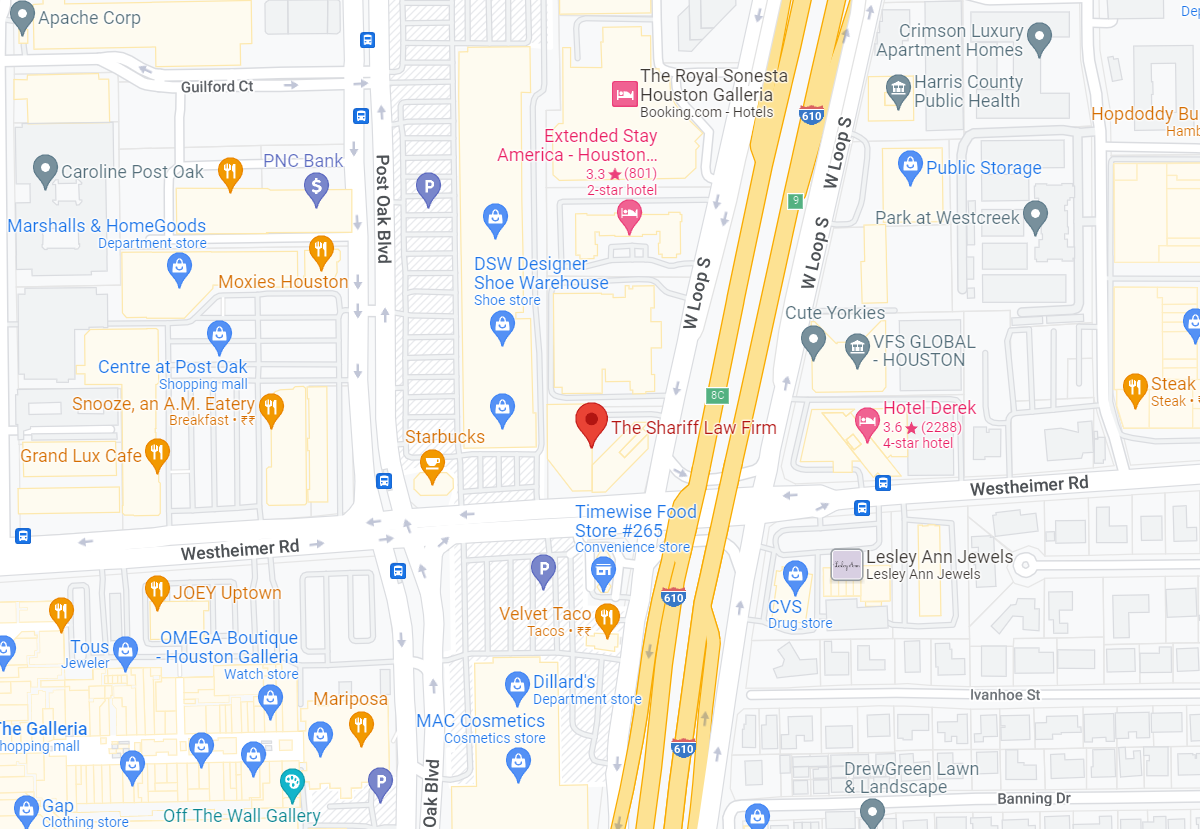What Are Right-of-Way Laws at Intersections?
When driving, right-of-way laws are there to keep you and other drivers safe. Every day, vehicles of all shapes and sizes interact with each other, creating a flow of traffic. But when someone disregards these laws, accidents can occur.
Texas drivers must yield the right-of-way in the following situations:
- Stop signs – At a stop sign, the driver must come to a complete stop and yield to other drivers or pedestrians.
- Traffic signals – When the traffic light is red or flashing, drivers must obey the signal and yield to oncoming traffic.
- T-intersections – If a T-intersection is not controlled by a light or stop sign, drivers on the road that terminates in the intersection must stop and yield to the flow of traffic on the through the street.
- Turning left – Drivers turning left must wait for vehicles to pass before turning.
- Unpaved roads – When driving on a private or unpaved road, the driver must yield the right-of-way to cars passing on the paved roadway.
Understanding Texas right-of-way laws can prevent accidents from occurring. However, when another motorist violates Texas law and injures you, you could be eligible for compensation. If you are suffering because of someone else’s reckless driving, please contact our attorneys immediately. We can help you recover compensation for medical expenses, lost time at work, pain and suffering, and more. Don’t suffer needlessly because another driver didn’t obey the law. Contact our law firm right away to start your car accident claim. Call Shariff Law Firm, PLLC, at 713-244-8392 today.
What Are Other Times Where a Driver Must Yield the Right-of-Way?
Most right-of-way laws pertain to vehicles at intersections. However, there are other situations in which it is essential for vehicles to obey right-of-way laws.
Some other times when a driver must yield the right-of-way in Texas are:
- When pedestrians have a “walk” signal – Drivers of motor vehicles may not cross a walkway when pedestrians are present and have a “walk” signal.
- Emergency vehicles – If an emergency vehicle approaches with lights and sirens on, all drivers must yield the right-of-way.
- School buses – Drivers must yield when school buses are loading or unloading and have the stop sign extended, regardless of which side of the street the driver is on.
- No pedestrian signal – If a pedestrian is waiting to cross and has no walk signal, the driver must yield the right of way.
What Are the Pedestrian Right-of-Way Laws?
In Texas, right-of-way laws don’t just pertain to vehicles. Pedestrians are also protected by right-of-way laws when they are crossing the road. In most cases, right-of-way laws favor pedestrians since being struck by a moving vehicle often causes severe injuries.
Motorists must obey the following right-of-way laws around pedestrians:
- All vehicles must yield to pedestrians even if they are crossing the road illegally.
- All vehicles must yield to pedestrians crossing the street at a green light, even if the walk sign is not illuminated.
- All pedestrians must be allowed to cross on a green light, even if the light turns red while they are crossing.
Similarly, pedestrians must follow their own right-of-way laws to keep themselves and others safe. Those laws include:
- Pedestrians can cross the street at a marked or unmarked crosswalk if there is a green traffic light. Pedestrians facing a red traffic light cannot cross.
- Pedestrians must follow “Walk,” “Don’t Walk,” and “Wait” signals at a crosswalk.
- Pedestrians cannot step into the road close to oncoming traffic if drivers do not have time to stop safely.
How Do Traffic Lights Impact Right-of-Way Laws?
Right-of-way laws may also change depending on the light you have while driving. In general, the following scenarios are true for all intersections:
- Green lights: When you have a green light, you have the right-of-way and can proceed into the intersection. However, if you see other vehicles or pedestrians approaching, use caution to avoid an accident.
- Green lights with no turn arrow: When turning left at a green light without a turn arrow, yield to the oncoming traffic that is coming straight ahead. Those vehicles have the right-of-way. Once it is safe, you can complete your left turn.
- Red lights: Red lights almost always mean that you must stop and yield the right-of-way to pedestrians and other vehicles on the road. If you are turning right on a red light, you must still stop fully and yield to any traffic or crossing pedestrians.
- Yellow lights: Yellow lights are meant as a caution, telling drivers that the green light is about to end. Texas law advises drivers to slow down and stop if it is safe at a yellow light.
What Happens if Someone Doesn’t Obey the Right-of-Way Laws?
Right-of-way laws are established to protect motorists and pedestrians on the road. If a driver fails to obey right-of-way laws, accidents are much more likely to occur. If you have been hit by a vehicle that failed to obey right-of-way laws in Texas, you deserve compensation for your injuries. Our team can help you seek the maximum compensation you deserve to make up for your pain and suffering.
Should You Hire Our Car Accident Attorneys?
If you have been injured in an accident caused by another driver’s recklessness or wrongdoing, please reach out to us right away. We will seek justice by opening a car accident claim for your injuries.
At our law firm, we have helped countless clients make a financial recovery following a personal injury. Our knowledge and experience give us the ability to achieve a positive outcome in your case. Please get in touch with our talented legal team immediately to schedule a consultation and see how we can help by calling Shariff Law Firm, PLLC, at 713-244-8392.


 CALL US NOW
CALL US NOW




